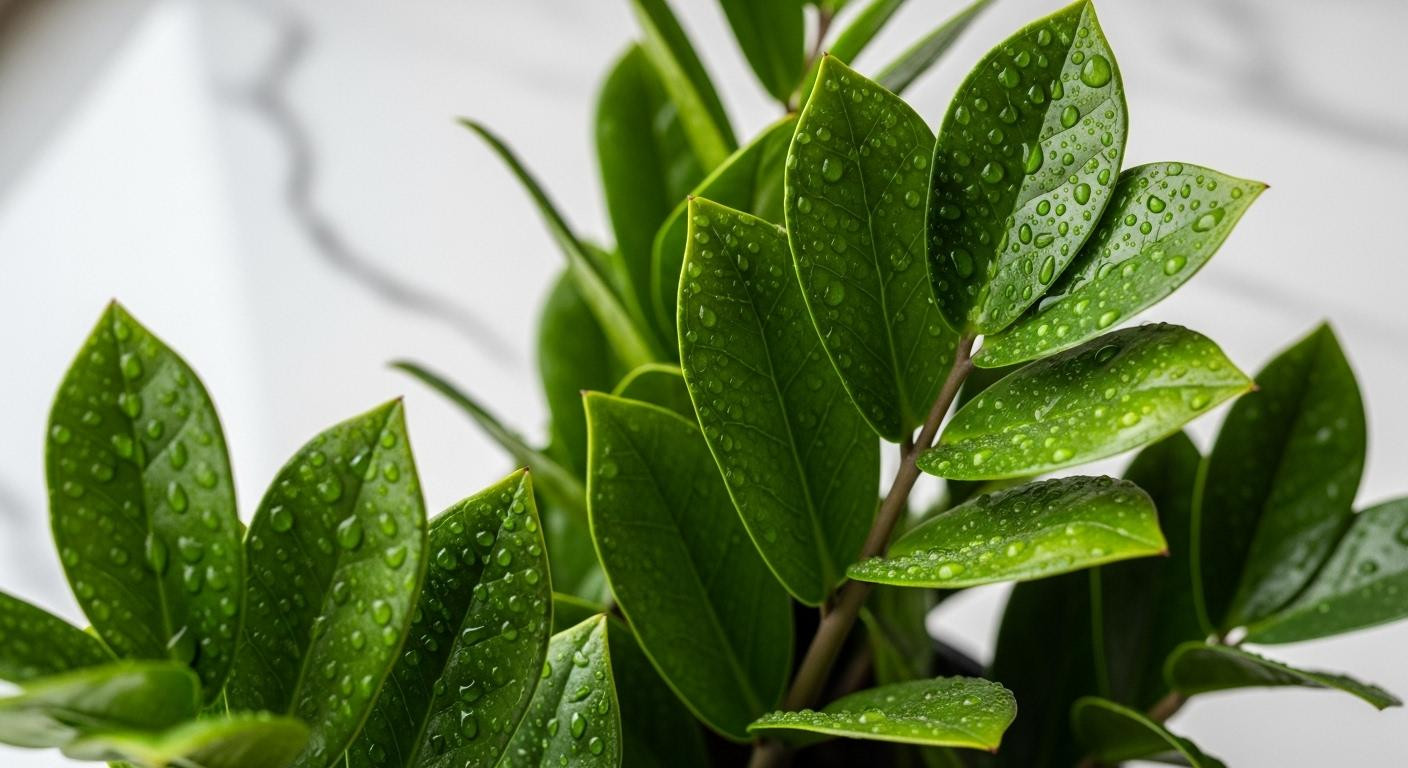Most houseplants end up as expensive compost within three months. Your brown thumb isn’t a character flaw. These 15 species evolved to survive neglect. They transform stale indoor air while tolerating weeks of forgotten watering schedules. Professional organizers with home styling expertise confirm these plants actively clean your space for months without demanding daily attention.
Why these plants thrive on neglect: the survival biology
Evolution designed certain plants for drought and darkness. The ZZ Plant stores water in underground rhizomes for 2-3 months. Snake Plants use CAM photosynthesis, opening leaf pores only at night to conserve moisture.
Home organization experts note these species treat human forgetfulness as normal environmental conditions. Their cellular structure expects irregular watering patterns. What kills other plants actually triggers their survival mechanisms.
Research from university horticulture departments shows these plants maintain metabolic function after 8 weeks without water. Their thick, succulent leaves store reserves while thin-leaved plants wither within days.
The top 5 extreme neglect plants ($10-$25)
ZZ plant: the 3-week forgiveness window
Zamioculcas zamiifolia survives 4-6 weeks without water during winter months. Its rhizome system shrinks as reserves deplete but rebounds completely when watered. Professional plant care specialists recommend watering only when soil feels completely dry throughout the entire pot depth.
Home improvement stores sell 6-inch pots for $20-$25 currently. The glossy leaves tolerate both bright offices and dim bathrooms equally well.
Snake plant: the 90% air purifier
Sansevieria trifasciata removes formaldehyde and benzene from indoor air through specialized leaf tissue. Environmental health specialists note these sword-like plants process toxins 24 hours daily without requiring bright light.
Winter watering drops to once every 6-8 weeks. Summer care increases to monthly watering. Retail prices range $15-$30 for standard sizes at major garden centers.
Pothos: the self-training climber
Golden Pothos grows up to 3 feet annually while forgiving overwatering mistakes that kill most houseplants. Its adventitious root system regenerates quickly from water damage.
Professional organizers recommend these $10-$15 plants for hanging baskets or trailing displays. They adapt to low light but grow faster near windows. Weekly watering during summer, bi-weekly during winter months.
Moderate care plants for confident beginners
Peace lily: the visual water alarm
Spathiphyllum droops dramatically when thirsty, providing foolproof watering cues. The leaves recover within 2-3 hours after thorough watering. Interior design professionals appreciate the white flower spikes that appear without special care requirements.
Home and garden retailers price these plants $20-$35 for blooming specimens. They tolerate medium light and signal their needs clearly through leaf position changes.
Spider plant: the self-propagating survivor
Chlorophytum comosum produces baby plants on hanging runners without human intervention. Home styling experts note these $8-$15 plants multiply freely, creating hanging displays that fill empty corners.
The narrow leaves tolerate dry indoor air better than broad-leafed species. Weekly watering maintains optimal growth during active seasons.
Bromeliad: the pet-safe pop of color
Central flower spikes provide months of vibrant color without deadheading or fertilizing. Professional plant care services confirm these tropical-looking plants require minimal maintenance despite their exotic appearance.
Pet owners appreciate their non-toxic status. Specialty nurseries stock colorful varieties for $25-$40 during peak seasons. Water weekly during warm months, less frequently when indoor heating reduces humidity.
The air quality transformation you can measure
NASA research identified plants that remove specific toxins through leaf absorption. Snake Plants and Peace Lilies process benzene, formaldehyde, and trichloroethylene continuously. One medium Snake Plant filters air in 100-square-foot spaces effectively.
Environmental health specialists note plants work as biological air filters without electricity costs. They convert carbon dioxide to oxygen 24 hours daily. Indoor plant ownership correlates with 12% reduced stress levels according to recent psychology research.
The transformation happens gradually over 2-3 months as plants establish root systems and increase leaf surface area for maximum air processing capacity.
Your questions about 15 indoor plants that are hard to kill answered
Can these plants survive a full month without water during winter?
ZZ Plants and Snake Plants survive 6-8 weeks without water during dormant winter months. Reduced daylight triggers slower metabolism and decreased water uptake. Signs of true stress include leaf yellowing, not just slower growth rates during cold seasons.
Which single plant provides the most air purification per dollar?
Snake Plants offer optimal cost-effectiveness at $15-$25 with proven toxin removal capabilities. They process air continuously while requiring minimal care investment. Peace Lilies cost more initially but provide visual watering cues that prevent care mistakes.
Do low-light tolerant plants still produce oxygen in dim rooms?
CAM photosynthesis allows Snake Plants and ZZ Plants to process carbon dioxide efficiently in low-light conditions down to 25 foot-candles. This equals natural light 5 feet from north-facing windows. Completely windowless rooms require supplemental grow lights for long-term plant health.
Picture your home office six months from now. Three Snake Plants stand beside your desk, their thick leaves dusty but alive. They’ve converted your exhaled carbon dioxide into fresh oxygen while you forgot to water them twice this month. They don’t need perfection. They need neglect.
